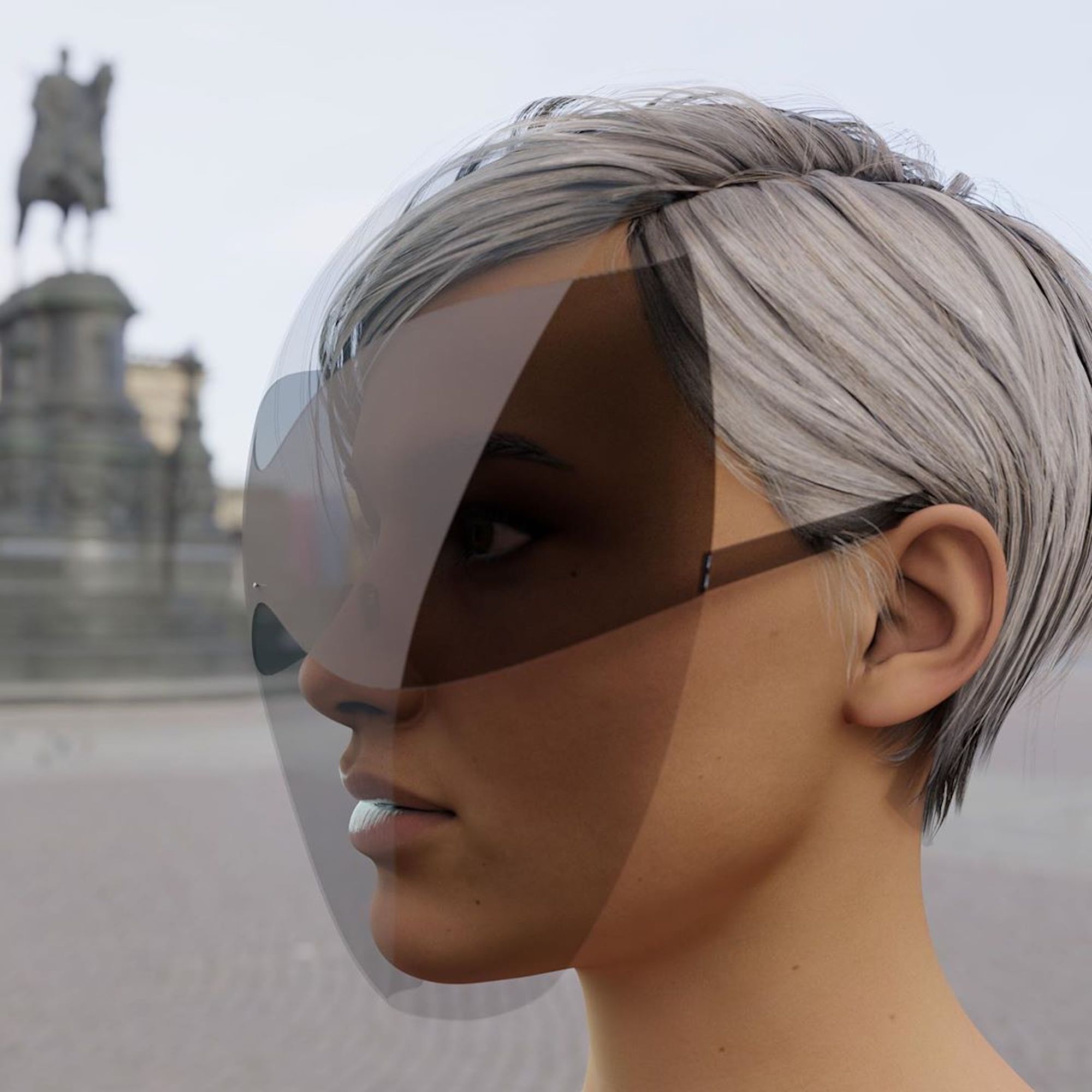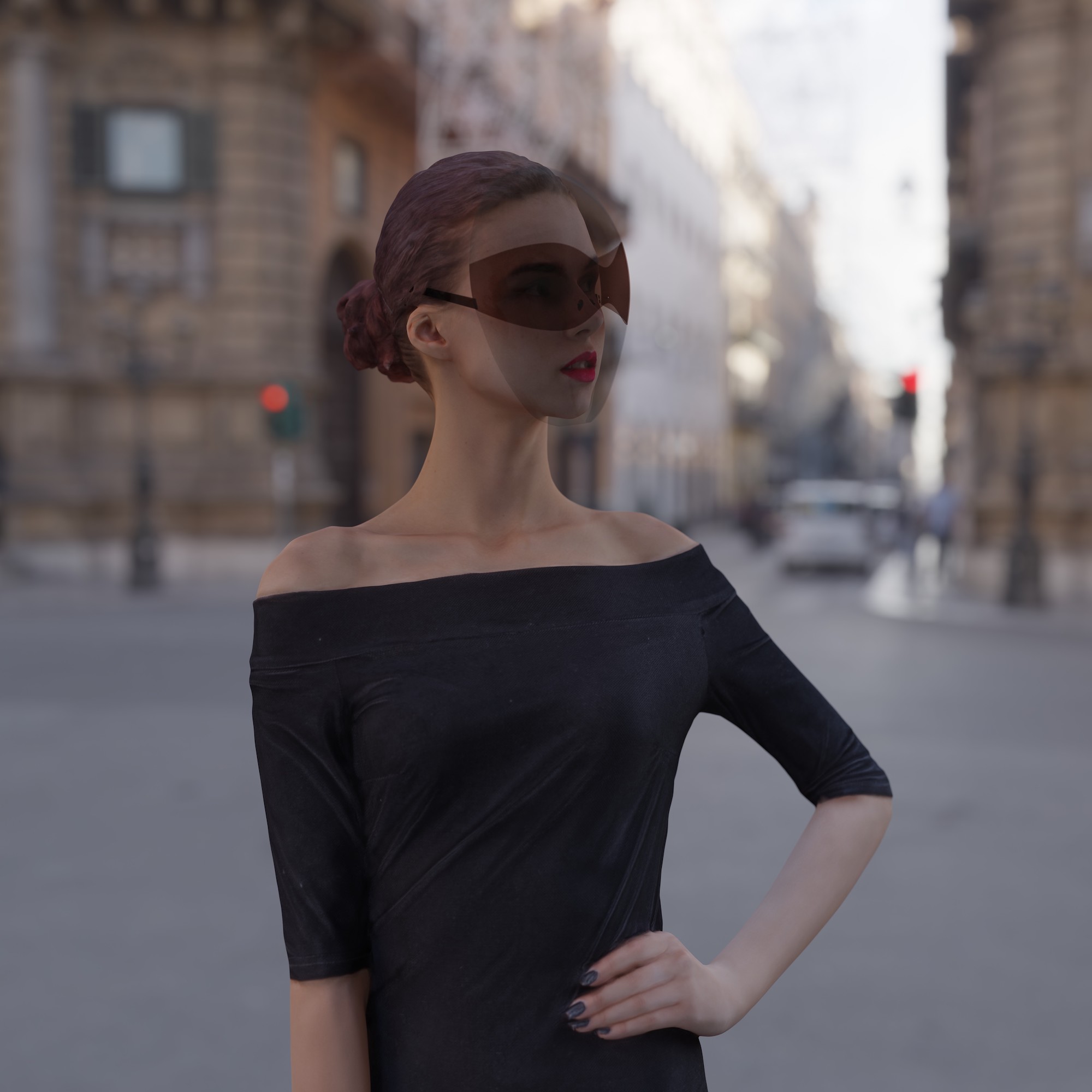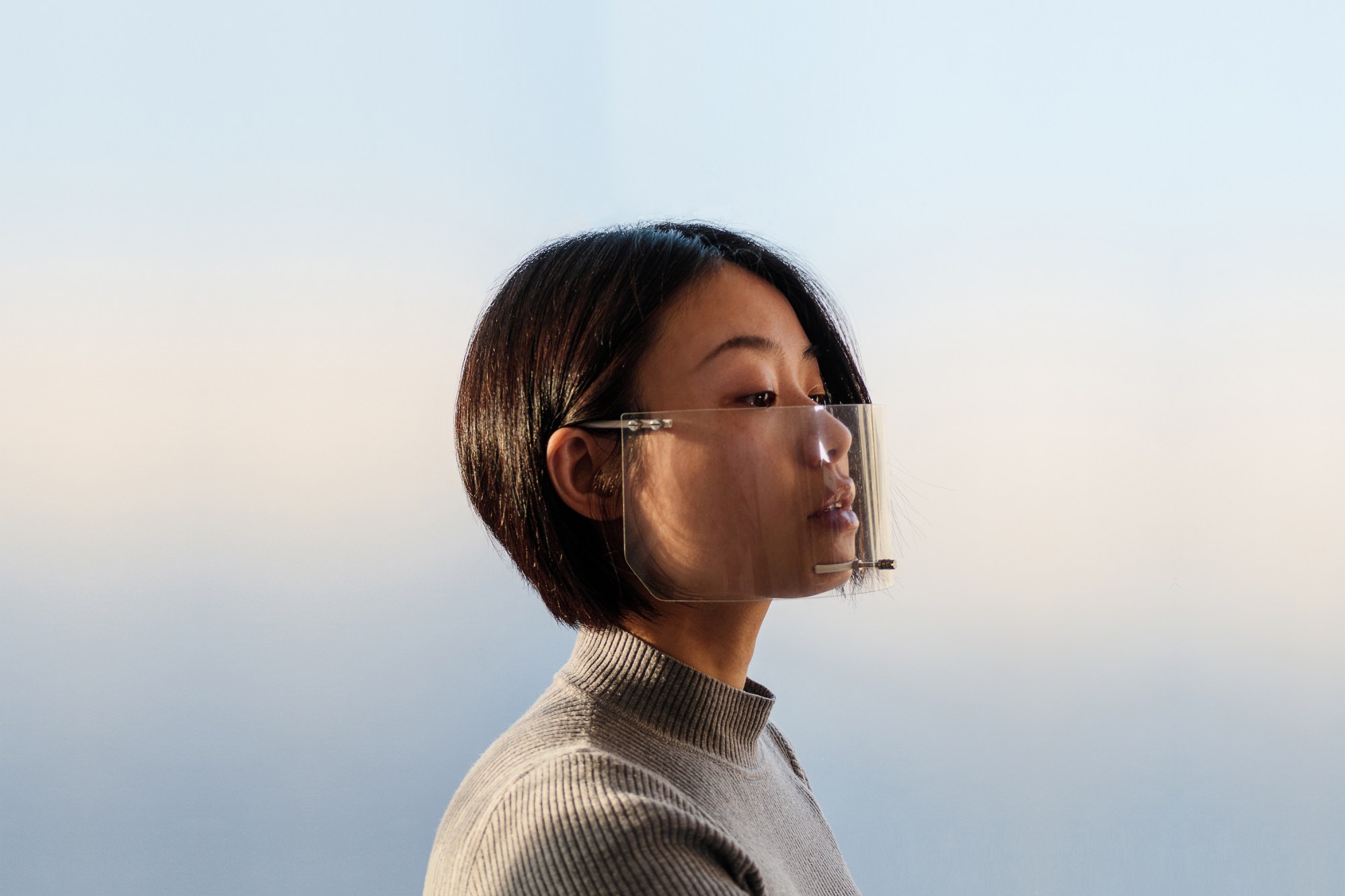From Berlin to New York, face masks are not only a sign of respect for public health but are increasingly becoming mandatory during our current global health crisis. Because of this, conversations around the future of facial protection and how to quickly provide safe solutions for the masses have already begun. Some are leaning towards the face shield, to prevent the spread of coronavirus as we ease social restrictions around the world.
This report, published by The Journal of the American Medical Association, suggests that companies like Apple and Nike have already started producing face shields. This is also true of emerging designers, who are beginning to reimagine the face shield for the luxury fashion market in an effort to make personal protective equipment (PPE) more wearable. With a simulation study on inhalation exposure to influenza virus finding that face shields reduce immediate viral exposure by 96% (when worn by a simulated healthcare worker within 18 inches of a cough), it’s easy to see why. However, it’s important that all studies be taken into consideration before moving from masks to face shields and to always follow medical advice.
One of these designers is Joe Doucet, president of Joe Doucet x Partners in New York, who posted a preview of his face shield design at the end of last month on Instagram. The design feels existential chic, worn in a similar way to sunglasses yet fully covering the face with semi-transparent shapes. With manufacturing already underway “with a large partner”, it might not be long before there’s such a thing as a luxury face shield market. “How do we encourage mass adoption of an unwanted necessity?” asks Doucet. The answer, it seems, is wearability.

“There really is no precedent for wide adoption of a face shield outside of the medical community. That is why I chose to adapt it to existing behaviors that we engage in when going outside,” explains Doucet. “We put on sunglasses. Think of these as modified sunglasses rather than an adapted face shield.” The “adapted sunglasses” will have an anti-fog coating and be made from polycarbonate, the same material as traditional sunglasses. Doucet is working to deliver them at a low price point to reach “as many people as possible”.
Along with a hope for widespread accessibility, Taiwanese concept designer Yi Fei Chen hopes her face shield design could lower the barrier of acceptance. “Western societies value the individual and the personal expression of it through fashion,” she explains. “The transparency of the proposed face shield is an alternative to minimize the cultural differences in western countries.” Chen purposely factored in face-recognition technologies, like unlocking your phone, when deciding on the transparency of her design too.
Currently in The Netherlands, Chen started designing the shield right after Europe’s outbreak. “I come from Taiwan, a country that has dealt with previous outbreaks like the SARS and the H1N1,” she says. “These masks are used by everyone, not only by the sick, and I just couldn’t figure out why western people seemed reluctant to use masks.” She describes making headway in “cultural acceptance” as her first priority, and maximum safety a second step, acknowledging that it is difficult to ensure a product is 100% safe, considering that it will depend how the product is used. That’s why Chen plans on shipping her product with “the most comprehensible steps to keep a healthy cleaning routine”.

For Eleanor J. Murray, Assistant Professor of Epidemiology at Boston University, one of her biggest concerns with designer face shields is that “they likely do not actually stop the movement of droplets into the air as much as just change their direction”. Saskia Popescu, a hospital epidemiologist and infection preventionist, shares similar concerns: “Right now, we don’t have the data to support moving from masks to face shields, this has been a growing conversation, but ultimately we need to study the coverage and understand the benefits and risks before turning that into guidance”.
Popescu, however, can see numerous ways that face shields could provide benefits, including their ability to be reused and that they allow for lip reading. “From sustainable options to better manufacturing and supply channels, I think the COVID-19 pandemic has highlighted the systemic issues we have in PPE,” she says. “Face shields are increasingly becoming a topic of conversation as mask supplies are limited and masks can only be used so many times. Since eyes can be a gateway for microbial exposure, face shields [that cover the eyes] do offer a nice protection”.
As both experts reiterate, face shields are not currently recommended as a replacement for masks, but it’s clear the conversation on how to improve the wearability of PPE is currently underway. As designers across the world continue to get creative with their solutions, a Black Mirror-style image of streets filled with futuristic face shields doesn’t seem like that distant of a reality.

